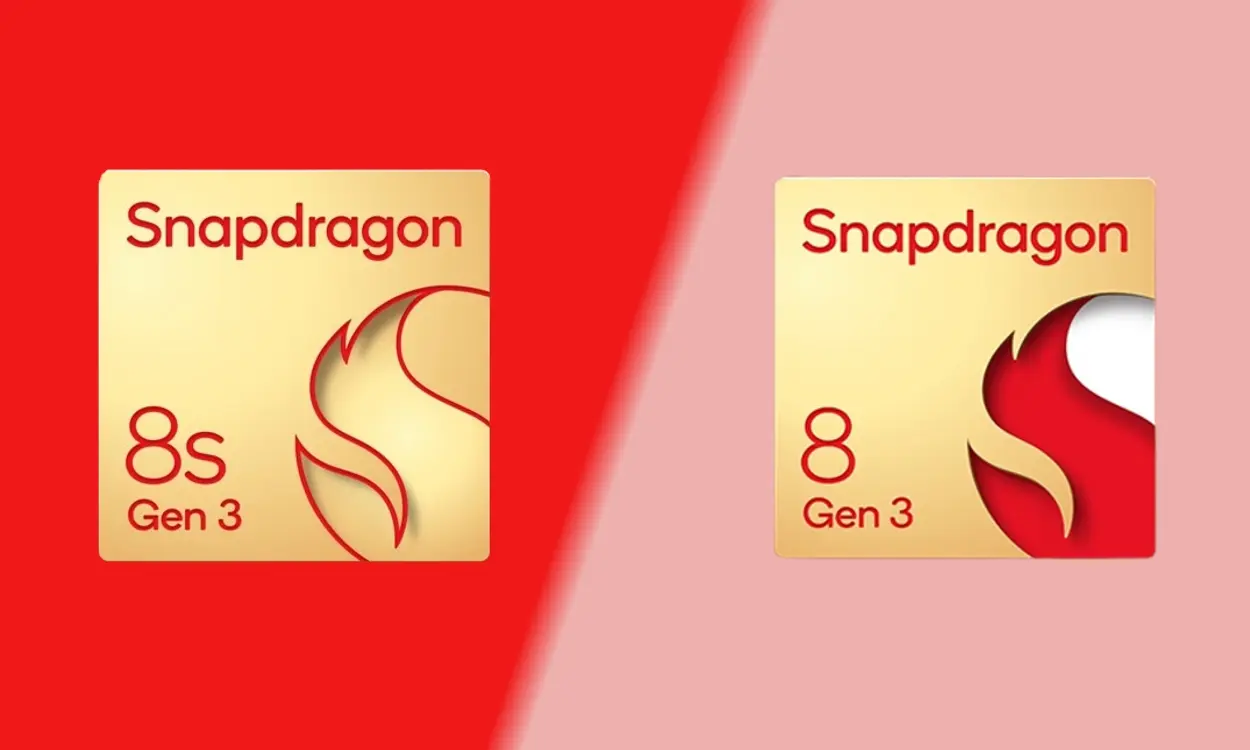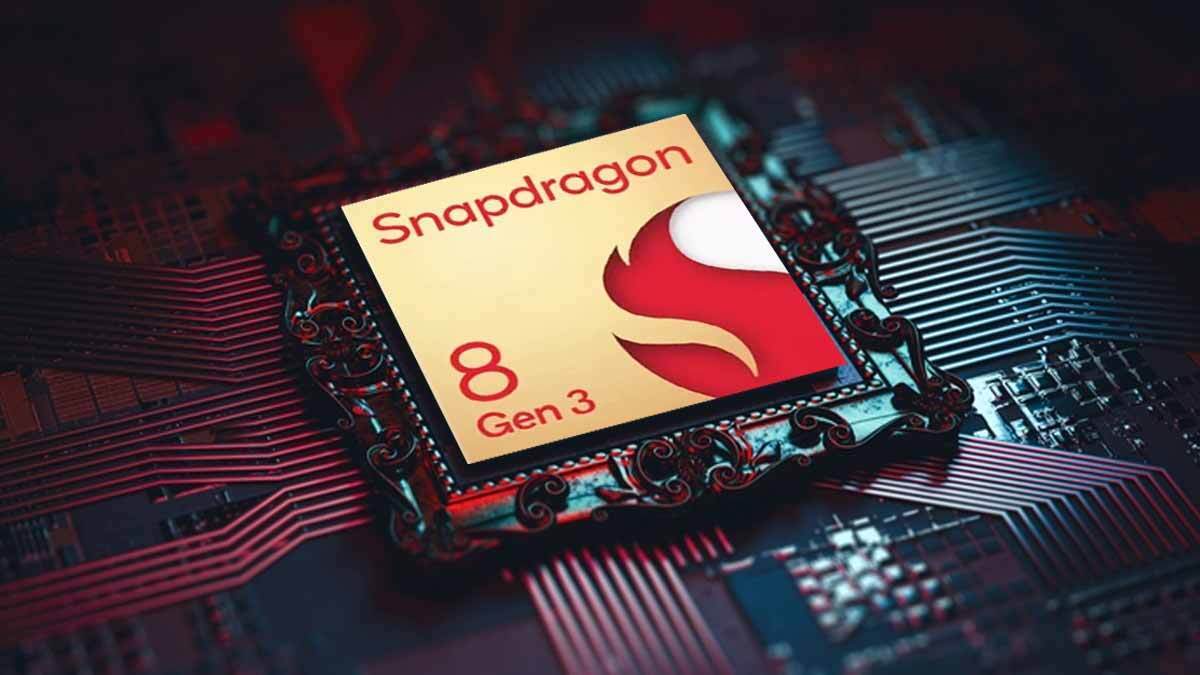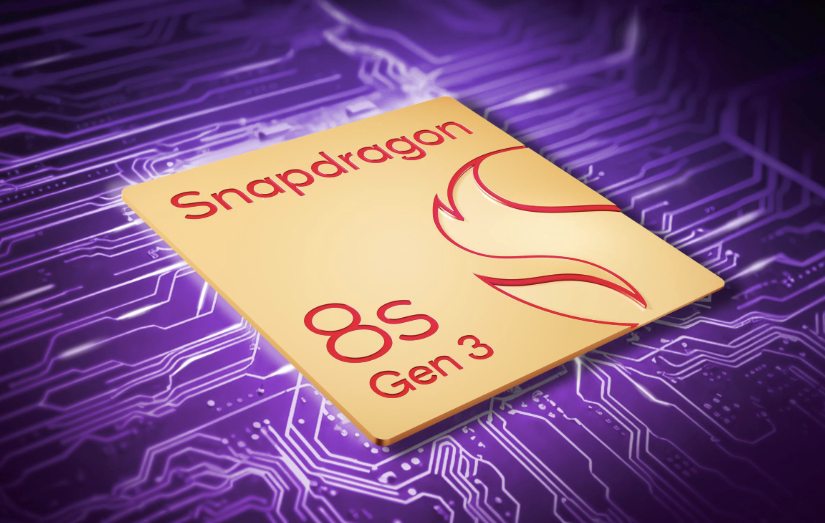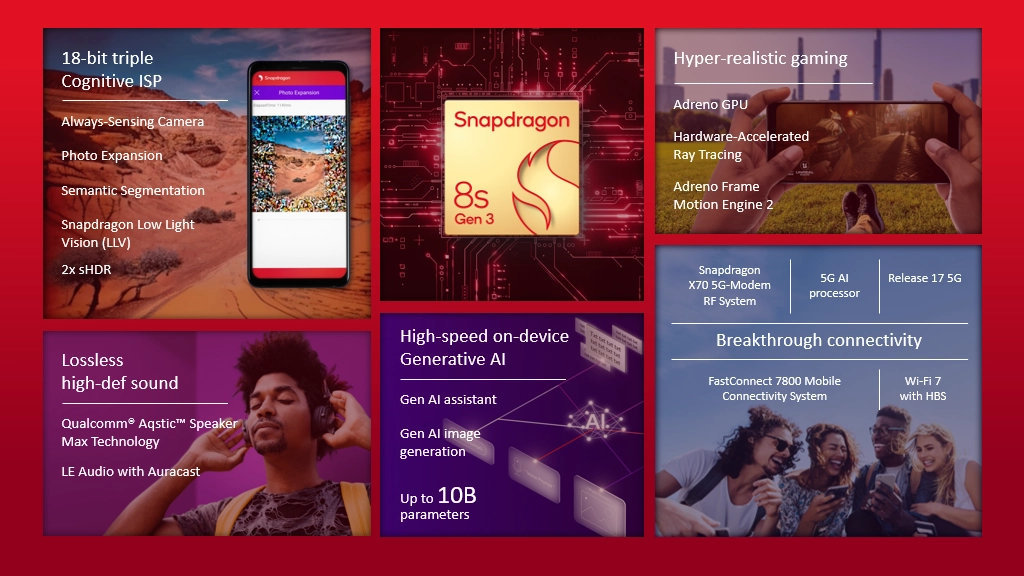Highlights
- Snapdragon 8s Gen 3 features slightly underclocked CPU for balanced performance.
- Adreno 735 GPU in 8s Gen 3 offers solid graphics but trails behind 8 Gen 3’s Adreno 750.
- Both chipsets support advanced AI capabilities and up to 24 GB LPDDR5X memory.
- Connectivity remains robust across both models, ensuring fast and reliable connections.
Qualcomm is taking a novel approach to its chipset lineup this year, introducing the Snapdragon 8s Gen 3, a new variant that’s slightly toned down from its flagship Snapdragon 8 Gen 3.
Aimed at powering the next generation of upper mid-range smartphones, the Snapdragon 8s Gen 3 is set to redefine what users can expect from their devices, offering a blend of performance and efficiency.
| Feature | Snapdragon 8 Gen 3 | Snapdragon 8s Gen 3 | |
| CPU Configuration | Octa-core Kryo CPU: | Octa-core Kryo CPU: | |
| CPU Cluster | – 1x 3.3 GHz (Cortex-X4)
– 3x 3.2 GHz (Cortex-A720) – 2x 3.0 GHz (Cortex-A720) |
– 1x 3.0 GHz (Cortex-X4)
– 4x 2.8 GHz (Cortex-A720 likely) – 3x 2.0 GHz (Cortex-A520 likely) |
|
| GPU | Adreno GPU | Adreno GPU | |
| Manufacturing Process | 4nm | 5nm | |
| AI Capabilities | Advanced AI features | Enhanced AI capabilities | |
| Connectivity | 5G support | 5G support | |
| Camera Support | Up to 200 MP camera | Up to 192 MP camera | |
| Other Features | Fast charging, Wi-Fi 6E,
Bluetooth 5.3, etc. |
Fast charging, Wi-Fi 6E,
Bluetooth 5.3, etc. |
|
Snapdragon 8s Gen 3 vs Snapdragon 8 Gen 3: A Closer Look at CPU and GPU

The Snapdragon 8s Gen 3 boasts an octa-core Kryo CPU architecture, including a prime Cortex-X4 core running at 3.0 GHz.
This setup is slightly underclocked compared to the Snapdragon 8 Gen 3, indicating a deliberate balance between performance and power efficiency.
In contrast, the Snapdragon 8 Gen 3 ramps up the speed with a prime core clocked at 3.3 GHz, suggesting a focus on delivering top-tier performance.
On the graphics front, while specific details of the Snapdragon 8s Gen 3’s GPU remain scarce, indications are that it features the Adreno 735 GPU.
This contrasts with the Snapdragon 8 Gen 3’s Adreno 750 GPU, showcasing a notable difference in raw graphical power as evidenced by benchmark scores.
Features and Benchmarks

Despite the toned-down CPU and GPU, the Snapdragon 8s Gen 3 doesn’t skimp on advanced features.
Itsupports AI-enhanced imaging capabilities, and impressive video capture options, and introduces gaming advancements such as Hardware-accelerated Ray Tracing.
However, it steps back slightly in some areas, such as support for Unreal Engine 5’s lighting and reflection innovations.
Benchmarking reveals the nuanced differences between the two chipsets.
While the Snapdragon 8s Gen 3 posts respectable scores like 1,846,775 in AnTuTu, the Snapdragon 8 Gen 3 leads, particularly in multi-core performance, showing the flagship chip’s superior processing prowess.
Even so, the 8s Gen 3 is definitely no slouch.
ISP and NPU: The Heart of Innovation

Both chipsets feature a Cognitive ISP, supporting advanced imaging techniques and up to 200MP photo capture. Yet, the Snapdragon 8s Gen 3 slightly trails its counterpart in video capabilities.
The NPU, crucial for running AI models, remains potent in the Snapdragon 8s Gen 3, though it might not match the Snapdragon 8 Gen 3’s speed due to the interplay between CPU, GPU, and NPU performance.
Memory and Connectivity

Supporting up to 24 GB of LPDDR5X memory and UFS 4.0 storage, both chipsets ensure swift data access and ample storage speeds.
With FastConnect 7800 enabling Wi-Fi 7 and Bluetooth 5.4, and differing 5G modems between the models, Qualcomm ensures that connectivity remains a strong point across its chipset range.
Implications for Devices and Users

Devices powered by the Snapdragon 8s Gen 3 are to be upon us soon, with teasers for models from Xiaomi, realme, and Redmi hinting at the chipset’s widespread adoption.
Users keen on the latest tech can look forward to experiencing the Snapdragon 8s Gen 3’s balanced performance in upcoming smartphones, which promises a solid, efficient user experience without the flagship price tag.
FAQs
What are the main differences between the Snapdragon 8s Gen 3 and the Snapdragon 8 Gen 3 CPUs?
The Snapdragon 8s Gen 3 has a slightly underclocked CPU with a prime core at 3.0 GHz, compared to the Snapdragon 8 Gen 3’s prime core at 3.3 GHz, balancing performance and efficiency.
How do the GPUs of Snapdragon 8s Gen 3 and 8 Gen 3 compare?
The Snapdragon 8s Gen 3 is rumoured to have an Adreno 735 GPU, which delivers about 62% of the GPU performance of the Snapdragon 8 Gen 3’s Adreno 750 GPU.
Can both chipsets handle advanced AI tasks and imaging capabilities?
Yes, both the Snapdragon 8s Gen 3 and 8 Gen 3 are equipped with Cognitive ISPs and Hexagon NPUs, supporting advanced AI models and imaging capabilities, although the 8 Gen 3 has a slight edge in performance.
What kind of memory and storage support do the Snapdragon 8s Gen 3 and 8 Gen 3 offer?
Both chipsets support up to 24 GB of LPDDR5X memory and UFS 4.0 storage, ensuring fast data access and ample storage speeds.
How does the connectivity compare between the Snapdragon 8s Gen 3 and 8 Gen 3?
Both models offer FastConnect 7800 with Wi-Fi 7 and Bluetooth 5.4 support, with the main difference being the use of Snapdragon X70 modem in the 8s Gen 3 versus the X75 in the 8 Gen 3.
Also Read: Qualcomm Snapdragon 8 Gen 4 Could Revolutionise Flagship Smartphones with 4GHz Clockspeed
Also Read: Qualcomm Snapdragon X Elite Set to Transform PCs with Next Windows Update in Mid-2024
